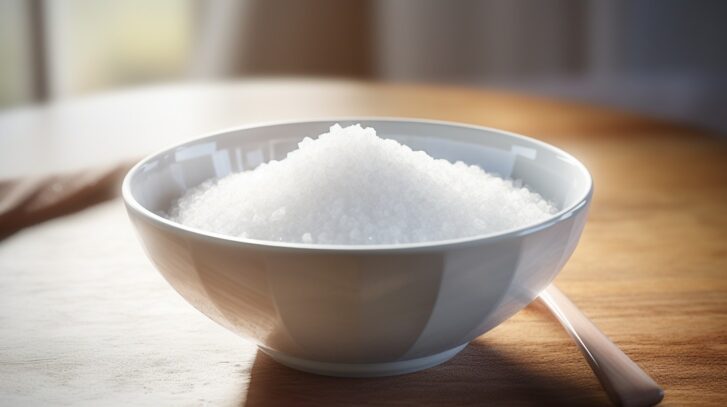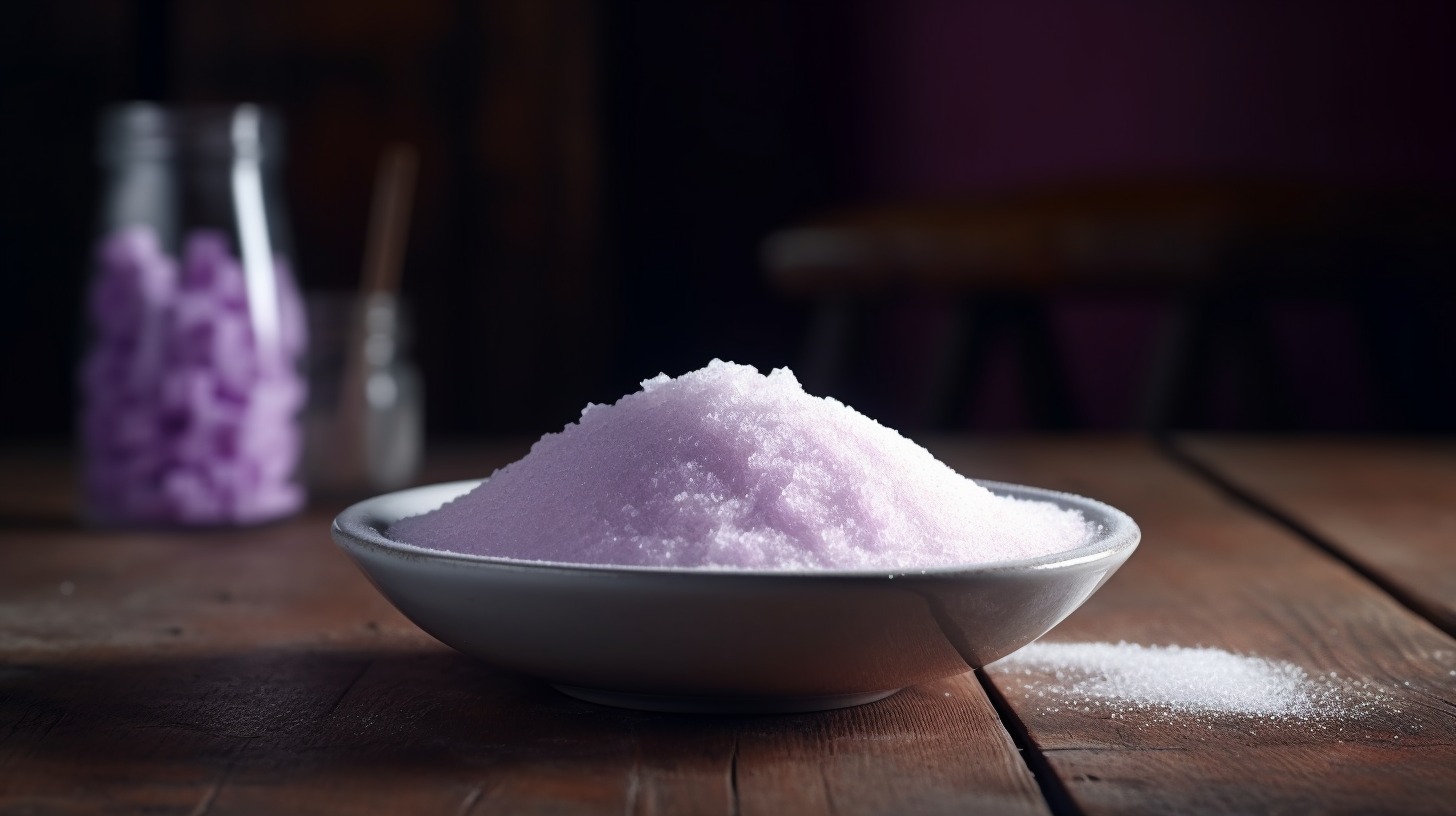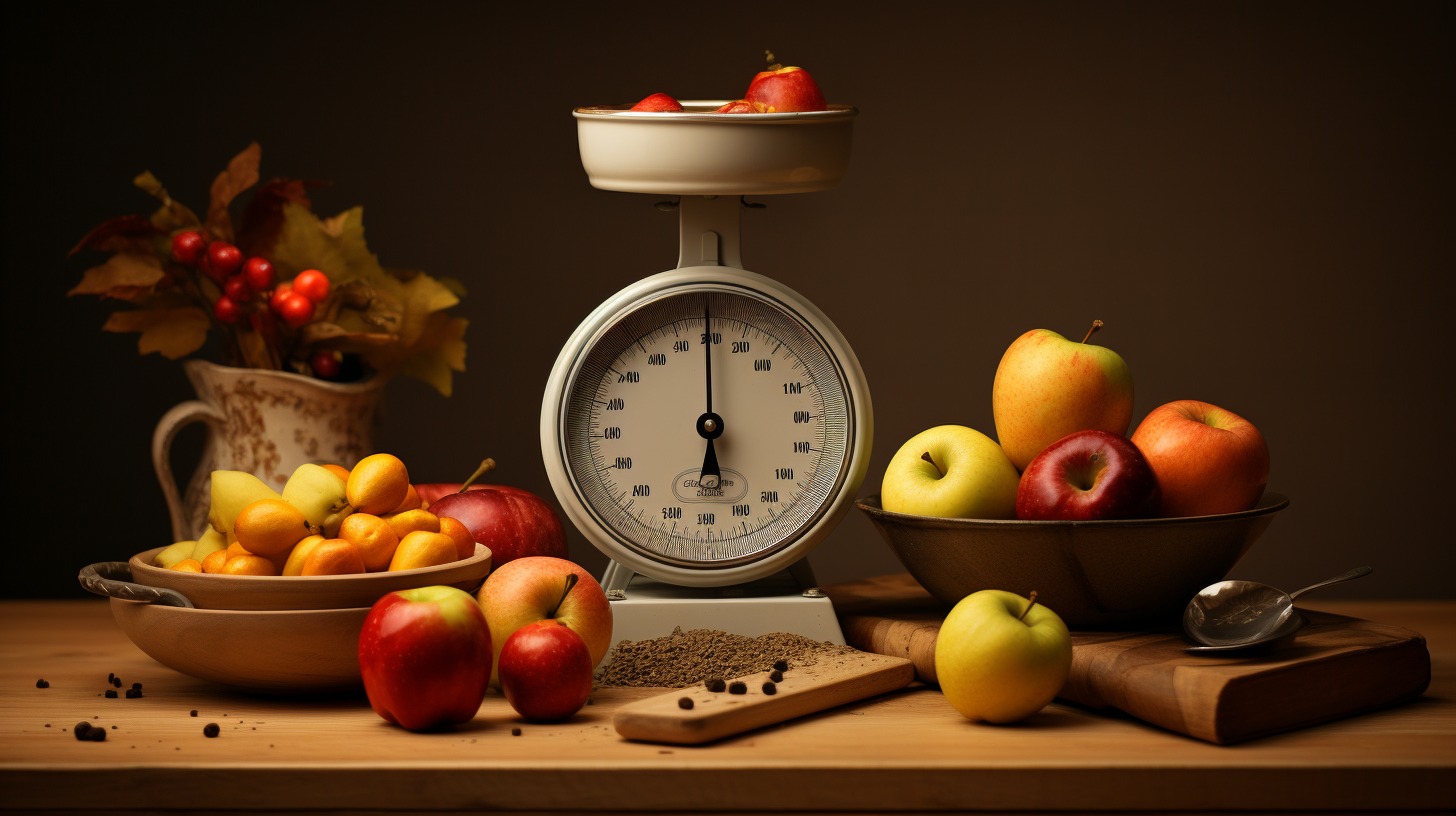Sucralose is quite a popular option for those who are exploring alternatives to sugar. As someone who spent countless hours researching the alternatives, I found Sucralose to be easily among the best options out there. It offers quite a lot of things, which is the major reason why it became so prominent.
You might recognize it by its popular brand name, Splenda. It has become a staple in many diets, especially for those seeking sugar substitutes. It’s intriguing not only because of its sweetening capabilities but also due to the health discussions it sparks.
Today, I want to present you with all the relevant information you should know regarding this sweetener.
Sucralose Ins and Outs
Sucralose is a fascinating compound in the world of sweeteners. Unlike natural sugar, it’s a no-calorie sweetener, making it a popular choice for those monitoring their calorie intake. This potency is particularly beneficial in food manufacturing, as it allows for sweetness without the caloric content of sugar.
Comparatively, it differs from other artificial sweeteners like aspartame and saccharin. Its unique chemical makeup, derived from sugar itself, contributes to its taste profile, which many find more palatable than other alternatives.
It offers a wide array of benefits.
| Benefit | Description |
|---|---|
| Taste Profile | Closest to sugar among all sweeteners, 600 times sweeter |
| No Aftertaste | Lacks the bitter aftertaste found in many other high-intensity sweeteners (HIS) |
| Made from Sugar | The only non-nutritive sweetener made from sugar |
| Zero Calories | Ideal for low/no-calorie foods, beverages, and supplements |
| Shelf Life | Long shelf life ensures consistent sweet taste over product’s lifecycle |
| Stable Under High Temperatures | Suitable for products requiring pasteurization, UHT, or sterilization |
| High Intensity | Less product needed, resulting in cost reductions compared to sugar |
| Fermentation | Performs well in fermentation processes |
| Mixes Well | Blends well with other food ingredients, colors, fillers |
| Regulatory Approval | Approved by foremost food/beverage regulating authorities worldwide |
| pH Stability | Stable under a wide range of pH values, suitable for acidic products |
| Solubility | Highly soluble, mixes well in liquids, and soluble in ethanol for alcoholic beverages |
Health and Safety
The sweetener has been the subject of rigorous scrutiny by health authorities worldwide. The U.S. Food and Drug Administration (FDA), along with numerous international health organizations, has approved sucralose for consumption, underscoring its safety. The journey to this approval has been thorough and comprehensive.
Over the past two decades, more than 100 studies have been conducted to assess the safety. These studies cover a wide range of potential health impacts, including carcinogenicity, reproductive and neurological effects, and general toxicity.
The results have consistently supported the safety of sucralose, making it one of the most well-researched artificial sweeteners on the market. One of the key measures used to assess the safety of substances like this one is the Acceptable Daily Intake (ADI).
The ADI represents the amount of a substance that can be consumed every day over a lifetime without posing any health risks. For this one, the ADI is set at a level much higher than the average daily intake by most people, even those who regularly use the sweetener.
This wide margin ensures that even with daily consumption, sucralose users are well within the safety limits. It’s important to note that the determination of the ADI for sucralose is based on the principle of applying a significant safety factor to the highest intake level not associated with any adverse effects observed in studies.
This approach is a standard regulatory practice and is designed to protect even the most sensitive individuals in the population.
Sucralose is widely considered better than many other options, like agave nectar, even though it is an artificial alternative.
Sucralose and Different Conditions
Now that we went through the basics, we want to talk about the use of this sweetener in different conditions.
Diabetes
I have found the relationship between sucralose and blood sugar levels particularly noteworthy, especially for individuals with diabetes. Managing blood sugar is a critical aspect of diabetes care, and dietary choices play a significant role in this process. This option emerges as a valuable ally in this context due to its minimal impact on glycemic control.
The primary advantage for people with diabetes lies in its chemical structure, which the human body does not recognize as a carbohydrate. This means that when consumed, sucralose does not break down into glucose and therefore does not elevate blood sugar levels.
Numerous scientific studies support this, consistently showing that sucralose does not affect blood glucose or insulin levels. This non-glycemic property makes it an ideal sweetener for people managing diabetes, as it offers the pleasure of sweetness without the associated blood sugar spikes that come with sugar consumption.
This characteristic of sucralose significantly broadens dietary options for those with diabetes. Traditional dietary management for diabetes often involves strict limitations on sugar intake, which can be challenging for many people.
Foods and beverages that were once off-limits due to their sugar content can now be enjoyed in a modified form, sweetened with sucralose. This can have a positive impact on the overall quality of life and psychological well-being, as it reduces the feeling of being restricted in food choices. The same can be said about other alternatives, like Xylitol.
Weight Management
Weight management is a multifaceted issue, and the role of sucralose as a calorie-free sweetener is particularly interesting. Many people turn to this option as a tool for managing their weight, primarily due to its lack of calories.
By picking sucralose instead of sugar, one can significantly reduce the caloric content of foods and beverages, which can be beneficial for both weight loss and weight maintenance.
- Caloric Reduction: Adds sweetness without the calories of sugar, potentially reducing the total calorie intake.
- Holistic Approach: Effective weight management often requires a comprehensive approach that includes diet, physical activity, and lifestyle changes. Relying solely on artificial sweeteners may not be sufficient for significant weight loss.
- Individual Responses: People’s responses to artificial sweeteners in terms of satiety and calorie compensation can vary, affecting their effectiveness in weight management.
It’s important to remember that weight management strategies should be personalized, taking into account individual dietary habits, lifestyle, and genetic factors. While sucralose can be a useful tool in reducing calorie intake, it should be part of a broader strategy that includes healthy eating habits and regular physical activity.
The Gut Microbiome
The gut microbiome, an ecosystem of microorganisms living in our digestive tract, plays a crucial role in overall health. The impact of artificial sweeteners, including sucralose, on this complex system has been a topic of interest and debate in nutrition science.
Contemporary studies, including those involving human subjects, generally indicate that sucralose does not significantly disrupt the gut microbiome. Research on the gut microbiome is rapidly evolving. Our understanding of how various foods and additives interact with gut bacteria continues to grow.
Based on current evidence, sucralose is considered safe with no known adverse effects on gut health. The human gut microbiome is highly diverse and individualized, making generalized conclusions about the impact of certain foods or additives challenging.
While concerns have been raised about artificial sweeteners altering gut bacteria, the evidence regarding sucralose suggests it is a safe option in terms of gut health. As with all areas of emerging science, ongoing research may provide new insights into the interactions between diet, including artificial sweeteners, and the gut microbiome.
Individuals need to consider their overall dietary pattern and its impact on gut health, rather than focusing on single ingredients.
FAQs
How much sucralose is OK per day?
The Acceptable Daily Intake (ADI) for sucralose, set by health authorities like the FDA, is 5 milligrams per kilogram of body weight per day. For an average adult, this equates to about 340 milligrams of sucralose daily, which is much higher than what most people would typically consume.
Does the body recognize sucralose as sugar?
No, the body does not recognize sucralose as sugar. It is not metabolized for energy like sugar. It passes through the body mostly unchanged, which is why it does not contribute calories or affect blood sugar levels. The same needs to be said about saccharin.
Is sucralose better than stevia?
Whether sucralose is “better” than stevia depends on individual preferences and needs. Both are non-nutritive sweeteners and considered safe by health authorities. It is known for its taste, which is very similar to sugar, while stevia is a natural sweetener derived from the leaves of the Stevia plant.
Does Coke Zero have sucralose?
Coke Zero typically uses a blend of aspartame and acesulfame potassium as sweeteners, not sucralose. Formulations can vary by region, so it’s always a good idea to check the ingredient list on the product label for the most accurate information.
Closing Thoughts
Sucralose is a versatile and safe sweetener that can be included in a variety of dietary patterns. Its stability, taste, and non-caloric nature make it an attractive alternative to sugar, especially for those managing weight or blood sugar levels.
Like any dietary component, it should be used as part of a balanced and varied diet. As research continues to evolve, sucralose remains a valuable tool in our dietary arsenal, helping to reduce sugar intake while still enjoying the sweetness we crave.
Related Posts:
- How Heavy Should a Weighted Blanket Be? Everything…
- Does ADHD Medication Help with Social Skills? -…
- The Cost of A Psychological Evaluation - Everything…
- Psychological Facts About Soulmates You Might Not…
- Difference Between Saccharin and Sucralose: An…
- 4 Effective Hair Growth Hacks You Need to Try in 2024















